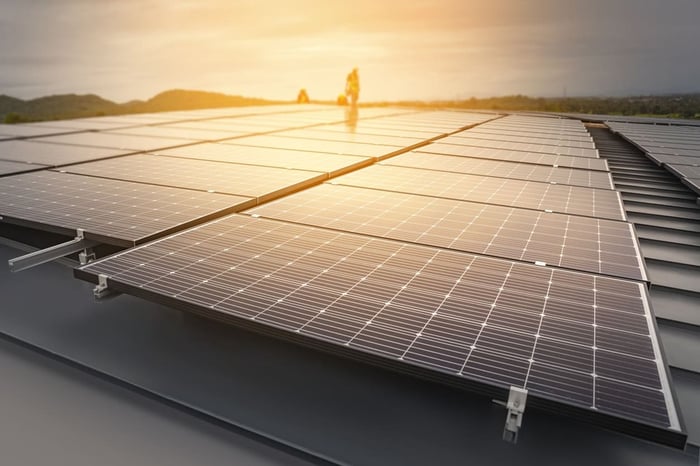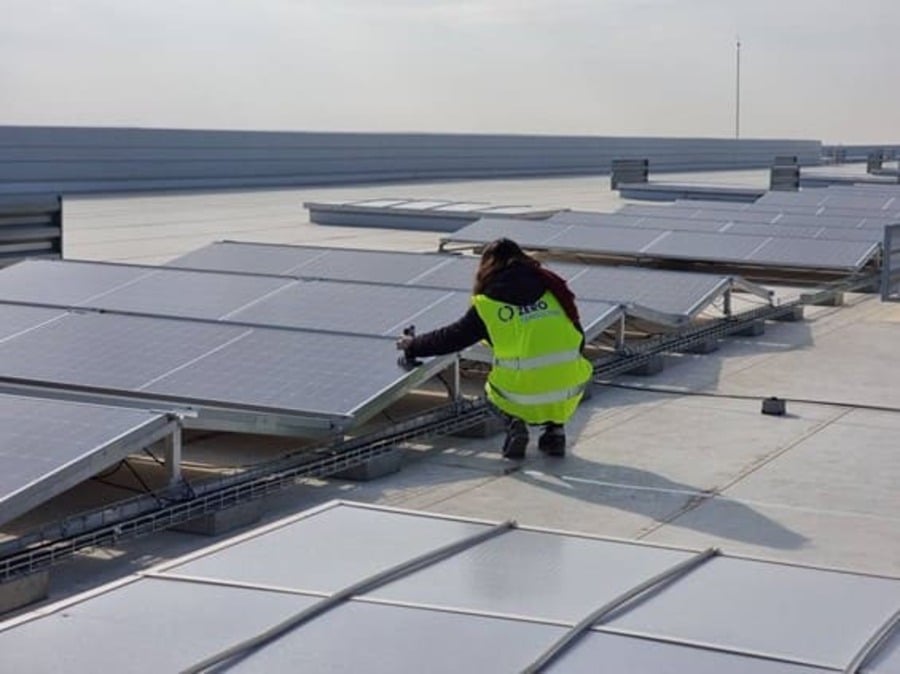Solar energy technologies are one of the cleanest forms of electricity generation. These are devices consisting of photovoltaic cells that convert solar energy into electrical energy. These cells absorb photons from the sun and release electrons, thus generating electricity.
In recent years, photovoltaic technologies have been gaining popularity and today many people choose them in order to reduce costs and, at the same time, help protect the environment. This is due to the fact that being a renewable energy and, according to studies, not producing gas emissions while it is being generated, makes it a purely clean energy in its use phase. It is an increasingly popular solution for nearly zero-energy buildings, or nZEB.
What are the factors that affect photovoltaic technologies?
To maximize its effectiveness, certain factors must be taken into account:
-
Location: Ideally, they should be south-facing to get more hours of sunlight.
-
Angle: The degrees of inclination depend on how close you are to the equator line, as the closer you are, the less inclination will be needed.
- Shadows: To make the most of solar radiation, it is important to avoid placing solar panels near elements that can cast shadows on them, such as trees, taller buildings, or overlapping panels. A shadow, no matter how small, causes the performance of the entire panel to plummet.
- Heat: High temperatures affect the performance of solar panels, which is why those that are less sensitive to temperature changes will have greater efficiency and higher performance in the long term. Before being marketed, tests are conducted on how temperature influences the performance of the panels, and it has been determined that:
- When the temperature exceeds 25°C, the panel's power decreases.
- For every 2°C above those 25°C, its power decreases by 1%.
- Maintenance: It is important that the solar panels are always clean and free of any kind of dirt so that they can fully capture the sunlight. Generally, cleaning them does not require much effort and no extra assistance is needed. Additionally, it is necessary to periodically check the status of the installation to ensure that its performance remains optimal and to resolve any issues if they arise.

Trends in Photovoltaic Technologies
As an increasingly popular energy option, the market is being renewed and new photovoltaic technologies are becoming available. These can be classified into:
- Conventional solar panels: They capture sunlight and convert it into energy. They have an efficiency of up to 21%.
- PERC technology: It has been a great development within photovoltaic technologies, thanks to the higher performance of monocrystalline and polycrystalline modules. Currently, it is the one most favoured by manufacturers and distributors of solar panels due to the level of innovation they contain. This consists of placing an additional reflective layer on the back of the solar panel to make the most of the radiation. This layer allows part of the photons that pass through the cell to be reflected towards the cell, thus increasing the overall efficiency of the panel. In solar panels with this technology, the cells have a back layer that will help the cell to capture more solar radiation and a sheet that makes the excess light bounce back inside the cell and can be used (which differentiates it from conventional panels that do not use the excess light). By allowing sunlight to be maximized, the final cost of the panels is reduced. The efficiency of solar panels with this technology is up to 23%.
- Half-Cell Technology: This consists of the use of solar cells cut in half, placing the junction box in the centre of the panel. By cutting the cells in half, their resistance is reduced, which increases their efficiency. In solar panels with this technology, the current flow is divided into two and, by reducing its internal resistance, the continuous production of energy is ensured even if there is partial shading, as it will not affect the total output of the panel.
- Hybrid solar panels: These panels combine photovoltaic and thermal technologies in a single module. Conventionally, photovoltaic panels and thermal panels are installed separately, but with this new technology, a single panel is installed, thus producing electricity and heat simultaneously. Its efficiency is up to 89% (19% electricity, 70% heat). That is thanks to the fact that hybrid solar panels harness both photovoltaic solar energy and thermal energy at the same time.
- Photovoltaic glass, which not only generates photovoltaic energy but also filters the heat entering the building. Its efficiency can reach up to 16% when the opacity is higher. This will depend on the range of installed peak power, ranging from 28Wp/m² in highly transparent glass (30%) to 58Wp/m² in non-transparent glass (0%).
Photovoltaic technologies are undoubtedly taking centre stage as one of the most effective solutions for protecting the environment (since solar energy produces no emissions while it is being generated and studies have shown that the carbon footprint during its life cycle is lower than that of fossil fuels) and reducing costs. If your goal is to be part of a future where sustainability is a key factor, considering photovoltaic technologies as an energy source can be a great first step to achieve it.
Now that we have told you everything about the different types of photovoltaic technologies, we hope we have been helpful so that you can finally make the decision to implement them.


